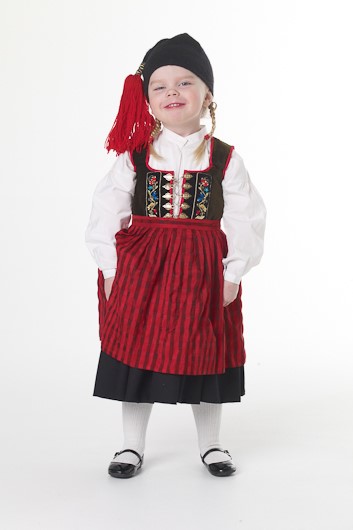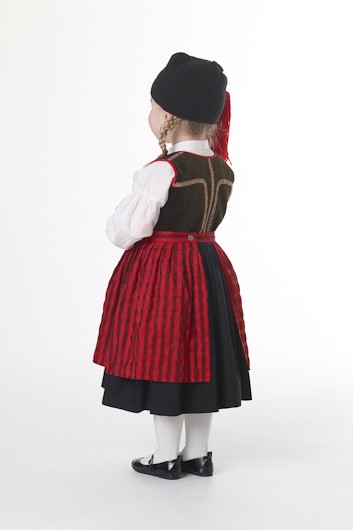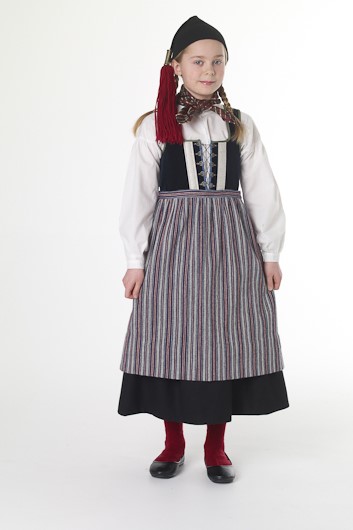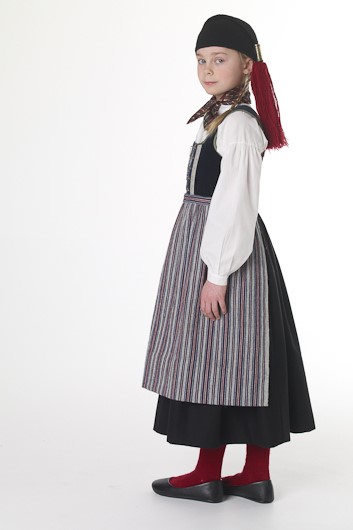Girls's costume, 19th century
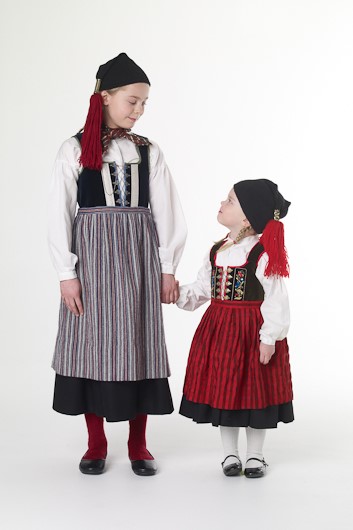 In the past, girls wore garments similar to those of adult women. They wore a chemise, and over that an upphlutur (bodice) decorated with ribbons and trim, with at least five pairs of eyelets, They often wore many petticoats under the skirt, which was not generally full-length – except perhaps when new. The apron was of chequered or vertically-striped woollen or cotton fabric. Girls wore a neckerchief and a deep cap knitted of fine black woollen yarn, with a red, green or blue tassel. They wore woollen stockings and home-made shoes of sheep leather, while children now use other footwear.
In the past, girls wore garments similar to those of adult women. They wore a chemise, and over that an upphlutur (bodice) decorated with ribbons and trim, with at least five pairs of eyelets, They often wore many petticoats under the skirt, which was not generally full-length – except perhaps when new. The apron was of chequered or vertically-striped woollen or cotton fabric. Girls wore a neckerchief and a deep cap knitted of fine black woollen yarn, with a red, green or blue tassel. They wore woollen stockings and home-made shoes of sheep leather, while children now use other footwear.
In the 18th century girls wore the jacket and skirt of the faldbúningur, like adult women, but instead of the faldur headdress they wore a cap which was tied under the chin and might be trimmed with lace or embroidery. In the early part of the century the skarðhúfa, with a large ornamental knob at the top, was worn; this developed into the spaðahúfa, which had a small protuberance imitating the grown women’s spaðafaldur headdress.


